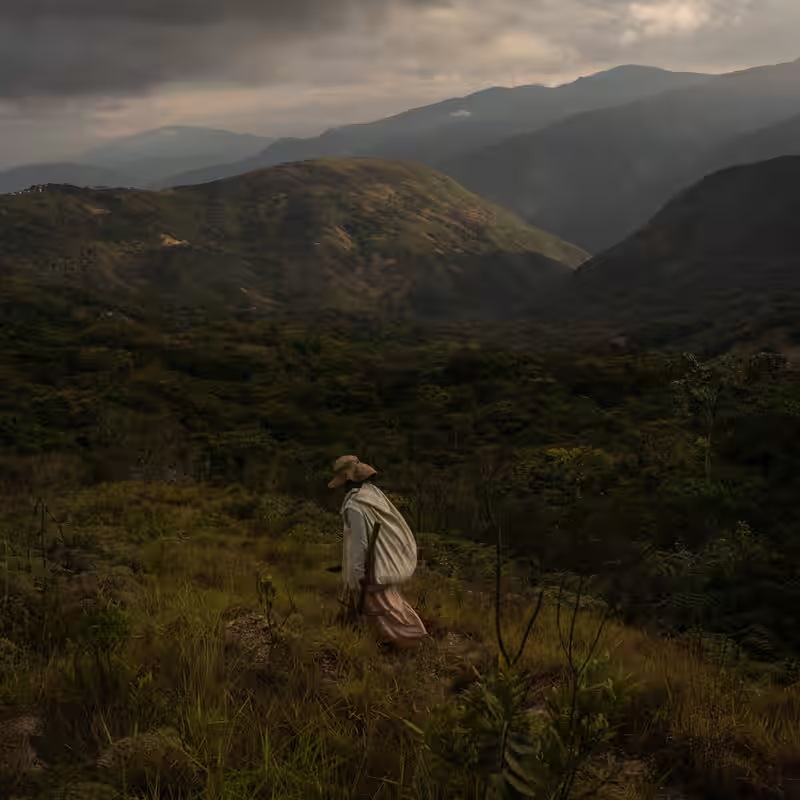Table of Contents
- Coca ≠ Cocaine: Bolivia’s Cultural Crusade
- Bolivia’s UN Campaign to Declassify Coca
- From Tea to Toothpaste: The Economic Promise of Legal Coca
- Global Divide: U.S. Opposition vs. Indigenous Rights
- What’s Next for the Coca Leaf?
- Sources
Coca ≠ Cocaine: Bolivia’s Cultural Crusade
In the misty highlands of Bolivia, coca isn’t a drug—it’s a daily ritual. Farmers like 64-year-old Jaime Mamani wake before dawn to tend their coca plots, not to feed a global narcotics trade, but to sustain a tradition that predates the Spanish conquest by millennia.
Yet internationally, the coca leaf remains shackled to its infamous derivative: cocaine. Classified by the United Nations alongside heroin and fentanyl as a “highly addictive” substance, coca has long been vilified despite its benign, natural form.
Now, Bolivia is fighting back—not with weapons, but with diplomacy, science, and cultural pride.
Bolivia’s UN Campaign to Declassify Coca
The Bolivian government is lobbying the United Nations to remove the raw coca leaf from its list of dangerous drugs under the 1961 Single Convention on Narcotic Drugs. A decision is expected by March 2026.
Why does this matter? Because the current classification forces signatory countries to criminalize coca—even when used traditionally. Bolivia secured a rare exemption in 2013 after briefly withdrawing from the treaty, but most Andean communities in neighboring countries still operate in legal gray zones.
A recent draft report from the World Health Organization (WHO) lends scientific backing to Bolivia’s cause, concluding that coca has “very low potential for dependence” and poses “no major health risks” in its natural form.
Key Facts: Coca vs. Cocaine
| Aspect | Coca Leaf (Natural) | Cocaine (Processed) |
|---|---|---|
| Active Compound | 0.1–0.9% alkaloids (including trace cocaine) | 90%+ pure cocaine hydrochloride |
| Effects | Mild stimulant (like coffee), reduces altitude sickness | Powerful euphoria, high addiction risk |
| Traditional Use | Chewed, brewed as tea, used in rituals for 8,000+ years | Illicit drug since early 20th century |
From Tea to Toothpaste: The Economic Promise of Legal Coca
Bolivia has already built a thriving domestic coca economy. The leaf appears in mate de coca tea served in luxury hotels, flavored street kiosks (think watermelon or orange coca), and even in coca-infused flour, soap, and ice cream.
Under President Evo Morales—a former coca grower himself—Bolivia enshrined coca as part of its national heritage in the 2009 Constitution. His slogan, “Coca Sí, Cocaína No” (“Coca Yes, Cocaine No”), became a rallying cry.
Today, the state-regulated market allows up to 54,000 acres of legal cultivation, supporting tens of thousands of families. The Vice Ministry of Coca and Integral Development oversees licensing, research, and product innovation.
“I have eaten, grown, dressed, studied, and supported my family thanks to the coca leaf,” said Omar Pintones, a ministry coordinator whose family has farmed coca for generations. “I consume it daily—and I’ve never lost consciousness.”
Global Divide: U.S. Opposition vs. Indigenous Rights
Not everyone is on board. The United States continues to oppose reclassification, arguing that loosening coca restrictions could fuel cocaine production—especially in Colombia and Peru, which lead global output.
But Bolivian officials counter that strict regulation and monitoring can separate traditional use from illicit trafficking. “Yes, it’s used for illicit purposes,” admits Mateo Mamani, Bolivia’s vice minister of coca. “But if we look at the coca leaf in a positive light, we can get a lot out of it.”
Critics also warn of corporate exploitation. Sociologist Sdenka Silva, founder of La Paz’s Museum of Coca, fears that if coca goes global, big multinationals—not Indigenous farmers—will reap the profits, echoing colonial-era patterns when Dutch plantations in Indonesia undercut Andean producers.
What’s Next for the Coca Leaf?
With Bolivia’s presidential runoff election set for October 19, 2025, the future of this campaign hangs in the balance. Both conservative candidates have yet to commit to Morales-style coca advocacy.
Still, momentum is building. Universities are studying coca’s antioxidant and anti-inflammatory properties. Startups are testing coca-based syrups and ointments. And globally, the conversation is shifting—from prohibition to harm reduction and cultural respect.
If the UN reclassifies coca, it could unlock international trade, scientific collaboration, and a new chapter for one of humanity’s oldest botanical companions.




